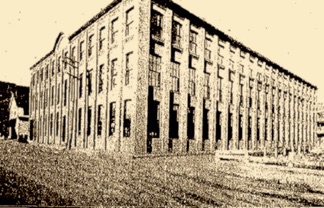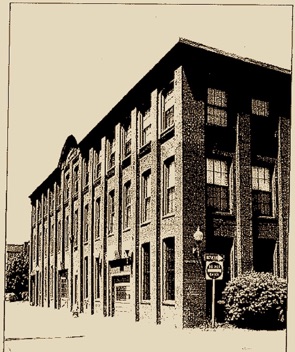Trinity Bicycle Company - Keene, New Hampshire


Trinity Cycle Co. Factory, C.A Jones Block, Keene, New Hampshire; Constructed 1897. Historic view courtesy of the Cheshire County Historical Society
“The Trinity automobile was not the first locally-owned horseless carriage. Several pioneer inventor-mechanics constructed automobiles, including Leonard A. Wellington, who appeared on the streets in a small motor wagon in October 1899. It weighed only 150 pounds, and the frame was of light metal and tubing equipped with bicycle wheels and a small gasoline engine of about three-quarters of a horse power. The car was built by Wellington while he was employed in Winchendon, Mass. It attracted considerable attention as the first automobile owned by a Keene resident. Harry T. Kingsbury of the Wilkins Toy Co. also made an automobile at his shop late in 1900. The motor of this machine was mounted on the front axle itself and had two cylinders and three speeds.”
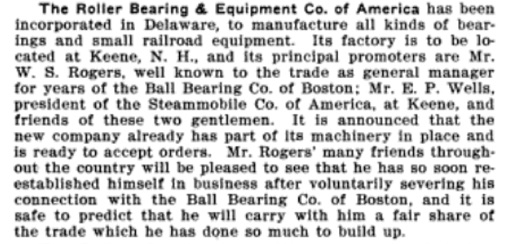
The Automobile Review January, 1901; Vol.4, No.1; Chicago
After Frank T. Fowler sold out and returned to Chicago, the Trinity Cycle Company started manufacturing automobiles at the turn of the century. The following from the Cheshire County Historical Society explains why:
“In the early days of the auto industry it was not unusual for small firms to produce cars in small towns throughout the country. Keene was the home of one such company.
Reynold Janney built an experimental auto in the Trinity Cycle Manufacturing Company plant on Church Street in 1900. Janney was the superintendent of this bicycle factory that was housed in the Jones Building where Woodward Motors and Walier Chevrolet were later located. The experimental machine, a light pleasure wagon, was given its trial run on June 26, 1900. The car had three cylinders attached to a revolving shaft. The shaft activated gears that powered the vehicle. Steam power was used to run the engine.
The trial run was successful and in January of 1901 the Church Street factory began production the new auto. During the next month the "Keene Sentinel" announced that the Steamobile Company of America, a Delaware corporation with capital stock of $500,000, had acquired the factory, machinery, and patent rights of the Trinity Cycle Company and were to commence the manufacture of the new auto under the name "Steamobile." The new firm was to test the model built the previous summer and then begin work on 125 of the new vehicles.
Although the firm advertised different models, including the "Model C" that sold for $950, the Steamobile Company was apparently not a success, going out of business within two years. Illustrations of these early Steamobiles are all that remain of Keene's brief entry in the nation's automobile industry.”
“The Jones Building at 35 to 41 Church Street in Keene is probably more closely related to the transportation industry than almost any other building in the city. The building, which stands directly behind the former Woolworth Store, was constructed by Charles Jones in 1897. Jones was the owner of the J. & F. French Company, manufacturers of sleighs and carriages.
The French Company was founded by Jones’ father-in-law, Francis French, and his brother Jason. The French’s originated the popular “Keene Sleigh” and were producing 400 annually in the 1860s. The firm continued until 1910 when a dramatic development in the transportation industry, the automobile, brought an end to the French carriage company.
Several years earlier, at the turn of the century, Jones had shared his building with the Trinity Cycle Manufacturing Company. Bicycles had become a popular means of transportation, but the Trinity Cycle Company was concerned with automobiles at that time. The company was producing an auto developed by the firm’s superintendent, Reynold Janney. Trinity Cycle was sold in 1901 to the Steamobile Company of America, which continued to build autos there for another year or two before it closed due to financial difficulties.
Despite the closing of the Steamobile Company and the end of the French carriage company in 1910, the Jones building remained closely linked with the transportation industry. In 1920 an auto dealer moved into the structure and thereafter the building was continuously occupied by a series of car dealers selling Studebaker, Lasalle, Cadillac, Oldsmobile, and Chevrolet automobiles. Consequently, the Jones Building has given more than 90 years of service to the transportation industry.”
In the initial enthusiasm, the cycle factory may have occupied the entire C.A. Jones building in 1887, but later shared the facility with the French Company as indicated below. So, at some point the location of the Trinity Cycle factory moved to the north side of the Jones block, at the intersection of Wells and Church Streets. The picture to the left is a Google map view of the address cited below of 35 Church Street. The building is still there, converted to apartments.
There may have been more of the building to the right of what is shown, because the citation below also indicates that the factory address was “35 to 41” Church Street.
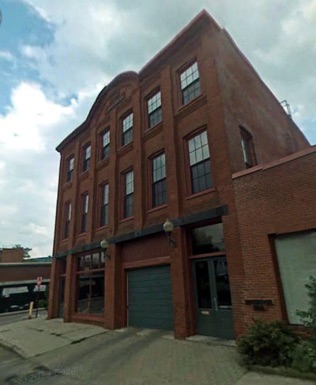
The Steamobile Company of America
Keene, NH 1900-1902
Along with many other early automobile companies, the Steamobile Company joined an amazing number of makers as indicated by the list of defunct automobile manufactures of the United States.
Check this list to see if what you’re driving is on it...
...I’d be kind of thrilled to have one of these defuncters in my garage !
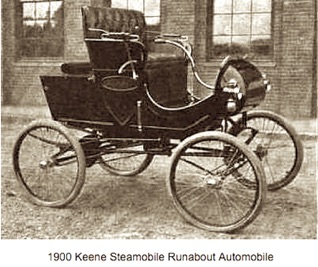
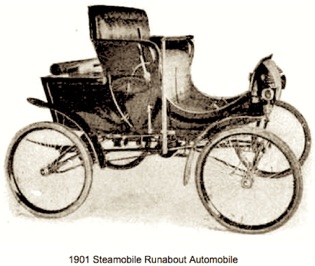
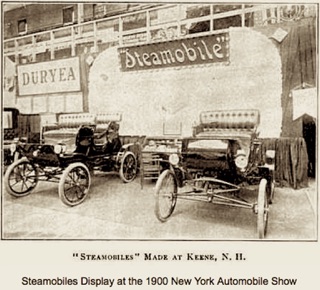
“The engine had a 3-1/2-inch stroke with 3 inches in diameter and the weight of the vehicle was 1125 lbs. The running gear was 93 inches with 54-in tread with 35-in wheels and 3-1/2 pneumatic tires. Capicity of the water tank was 26 gallons and the gas tank held 8 gallons. The color was black and Brewster Green. Price of the runabout was $1,100 and the coach was $1,300 F.O.B.”
Photos and text: History of Early American Automobile Industry, Chapter 5
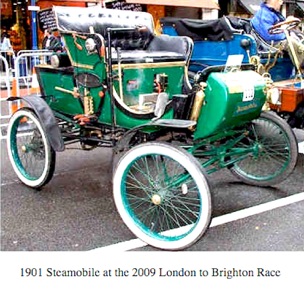
“The Standard Roller Bearings Company, of Keene, N. H., will build steam vehicles at the factory they recently purchased from the Steamobile Company of the same place. The new machine is to be called the Transit. It is built for two, but will carry four persons. The carriages have water tube boilers and burn kerosene. The water capacity is 30 gallons. A condensing apparatus is attached, and provides for the continued use of the water supply. The regulation of the water is automatic, as is also that of the oil, which is not under pressure. The fuel tank has a capacity of 16 gallons. The frame construction is all steel. The lubrication of the engine and of all the running parts of the vehicle is automatic. As will be observed from the view of the vehicle given above, the design is a complete departure from all types now on the market, and is built either for high speed on level roads.”
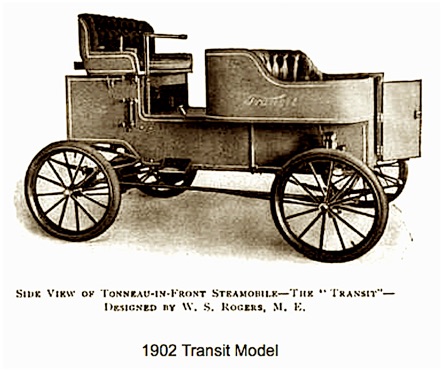
“It was announced in late 1902 that the company had too many vehicles to be sold and no more was to be produced. It was the country's first victim of over production.”
Photos and text: History of Early American Automobile Industry, Chapter 5
1902 STEAMOBILE TRANSIT MODEL - the end of the line
This is the south-facing Railroad Street side view of the building identified as the 1887 location of the Trinity Cycle Manufacturing company factory in a paper titled Factory Remnants: The Heritage of 19th and 20th Century Cycling by Robert McColloughin:
“The Trinity Cycle Manufacturing Company factory leased the Charles A. Jones Block between Railroad and Church streets in Keene, New Hampshire. Built exclusively for that company in June, 1887, the building was completed by November 11th when the New Hampshire Good Roads Association and Monadnock Cycle Club jointly sponsored a dedication ceremony. Architect Walter B. Nourse, in partnership as Barker & Nourse in Worcester, Massachusetts, designed the building, and Charles E. Woods and George A. Gordon from Keene were the principal builders.”
Frank T. Fowler organized a new bicycle company that became the Trinity Bicycle Company in Worcester, New Hampshire, but around the time he returned to Chicago, the company relocated in Keene, NH.
